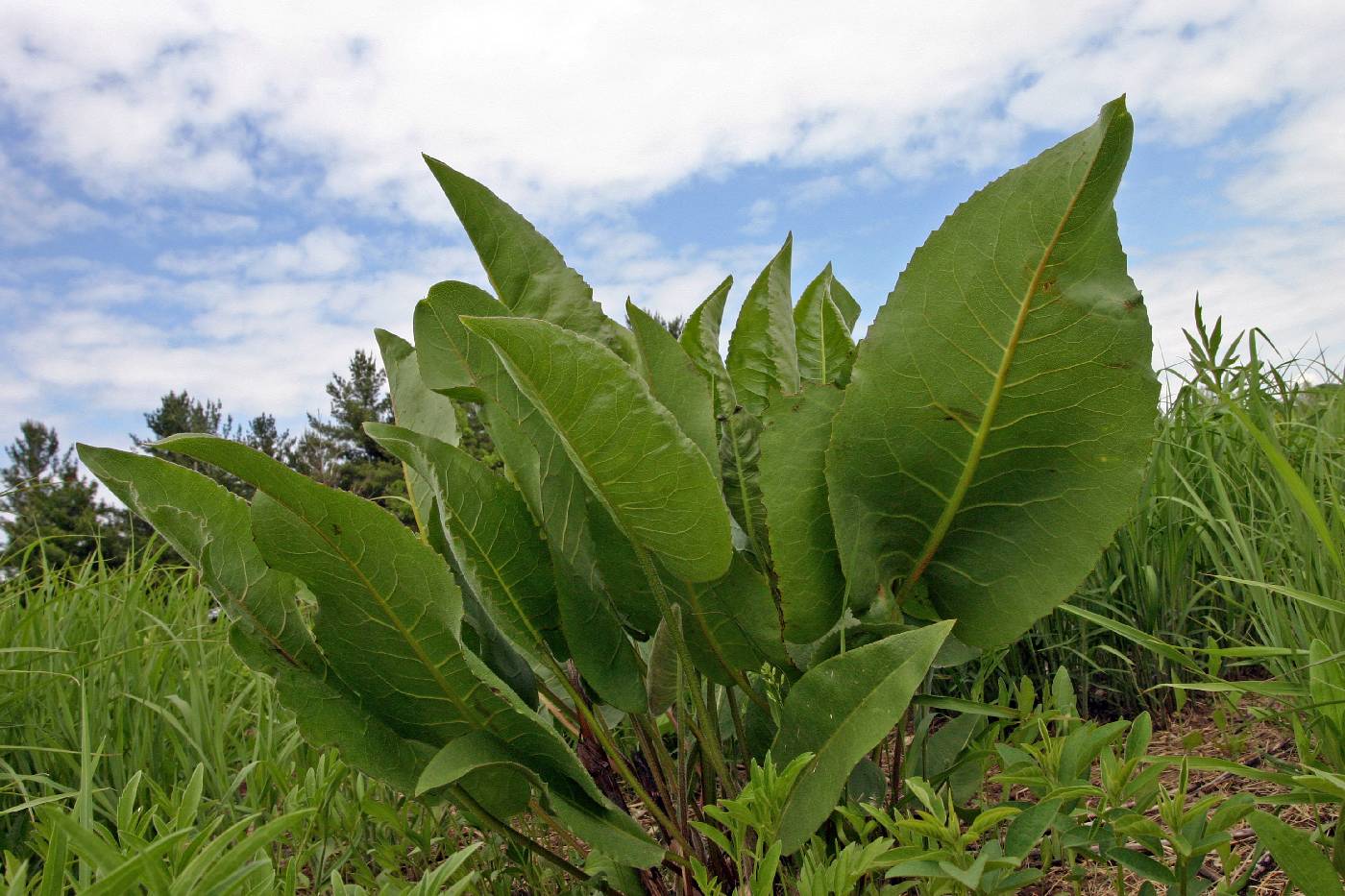Search
View the original page version
Silphium
|
Family: Asteraceae |
Perennials, 20-250+ cm (fibrous rooted, rhizomatous, or taprooted). Stems usually erect, usually branched (terete or square, often vernicose with resinous exudates). Leaves basal and cauline (basal persistent or withering before flowering); whorled, opposite, subopposite, or alternate (sometimes all conditions on one plant); petiolate or sessile; blades (1- or 3-nerved) deltate, elliptic, linear, ovate, or rhombic, sometimes 1-2-pinnately lobed or -pinnatifid, bases cordate or truncate to cuneate, margins entire or toothed, faces glabrous or hairy (sometimes stipitate-glandular). Heads radiate, in paniculiform or racemiform arrays. Involucres campanulate to hemispheric, 10-30 mm diam. Phyllaries persistent, 11-45 in 2-4 series (outer broader, foliaceous, inner smaller, thinner, each subtending a ray floret). Receptacles flat to slightly convex, paleate (paleae oblong, lanceolate, or linear). Ray florets 8-35+ in 1-4 series, pistillate, fertile; corollas yellow or white. Disc florets 20-200+, functionally staminate; corollas yellow or white, tubes much shorter than narrow, cylindric throats, lobes 5, deltate. Cypselae (black to brown) obflattened (± winged, shed alone without accessory structures); pappi 0, or persistent, of 2 awns (± confluent with cypsela shoulders and wings). x = 7. In keys and descriptions here, 'plants scapiform' indicates plants with distal cauline leaves notably smaller than basal and proximal cauline leaves, and 'plants caulescent' indicates plants with leaves ± uniform in size throughout; 'leaves persistent' indicates leaves persisting to flowering time, and 'leaves caducous' indicates leaves withering before flowering time.
Heads radiate, the rays yellow, pistillate and fertile, their ovaries imbricate in 2-3 series; invol bracts subequal or imbricate in 2-several series, firm, herbaceous or partly membranous-chartaceous; receptacle flat, chaffy, its bracts (or sometimes in part the inner bracts of the invol) subtending rays as well as disk-fls; disk-fls sterile, with undivided style; ray-achenes glabrous, strongly flattened parallel to the invol bracts, wing- margined, pappus none, or of 2 awns confluent with the wings of the achene; coarse perennial herbs with medium-sized or large subhemispheric heads. 15, U.S. Gleason, Henry A. & Cronquist, Arthur J. 1991. Manual of vascular plants of northeastern United States and adjacent Canada. lxxv + 910 pp. ©The New York Botanical Garden. All rights reserved. Used by permission. |

